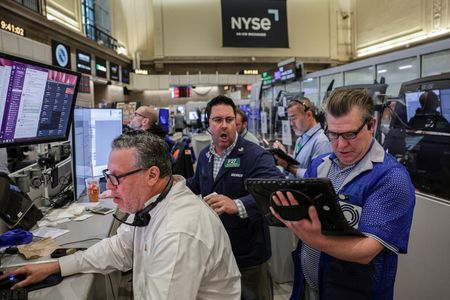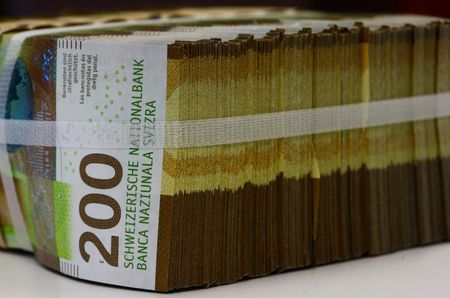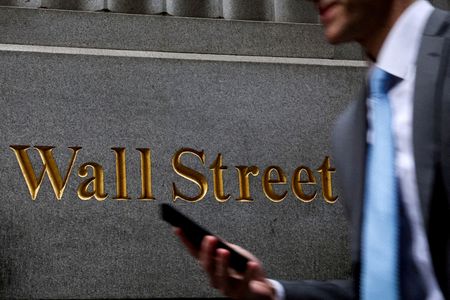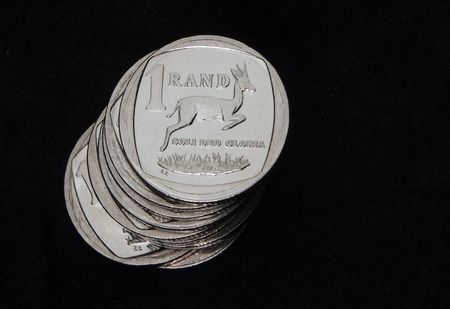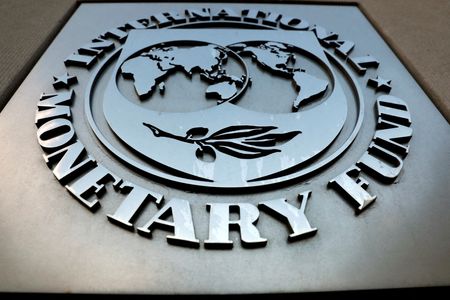By Sinéad Carew and Dhara Ranasinghe
NEW YORK/LONDON (Reuters) -MSCI’s global equities gauge lost ground on Friday and Wall Street had a muted end to the week while U.S. Treasury yields climbed after hawkish Federal Reserve officials trounced on hopes for a December interest rate cut.
After opening lower the S&P 500 recouped most of its losses with some help from bargain hunters after blue-chip bourses from Tokyo to Paris had closed sharply lower while fresh concern about Britain’s upcoming budget had added to pain in UK markets.
Citing inflation worries and signs of relative stability in the labor market after two U.S. rate cuts this year, a growing number of Fed policymakers have signaled reticence on further easing.
On Friday morning, Kansas City Federal Reserve President Jeffrey Schmid pointed to concerns that “too hot” inflation goes well beyond the narrow effects of tariffs alone, suggesting a potential dissent in December if policymakers opted to cut rates.
In the afternoon, Dallas Federal Reserve President Lorie Logan signaled opposition to a December rate cut after she already opposed the Fed’s October cut on concerns inflation is too high.
After 43 days without official data due to a record-long U.S. government shutdown, traders reacted to the central bankers’ comments by pricing in a roughly 46% chance of a quarter-point cut next month, down from 66.9% last week, according to CME Group’s FedWatch tool.
Still, the techology-focussed Nasdaq clawed its way back from losses to close slightly higher as investors set aside some of their jitters about high valuations in technology stocks.
“The rest of the world was weak because they were following the lead of the U.S market on Thursday,” said Andrew Slimmon, senior portfolio manager at Morgan Stanley Investment Management but he noted that Wall Street was supported by “a bid in stocks that have led the decline in the last few days.”
“People are conditioned to buy the dip. It has been a great strategy. And you’re at a time in the year when the winners keep winning. That’s why the stocks that are working today have been the winners since the low in April,” he said.
For example, AI chip leader Nvidia finished up 1.8% while the smaller cap S&P 600 technology index shook off earlier losses to close up 0.3%.
Likely adding to skittishness was the week ahead’s packed schedule, which includes quarterly earnings from Nvidia and big retailers, which will shed light on the health of the consumer and AI demand.
“There are so many cross currents out there in the market that it can be hard to determine which way things are headed Is the U.S. economy strong or weak? The answer is, both. Is inflation heading higher or lower? Are valuations high or low?” said Viktor Shvets, head of global desk strategy at Macquarie Capital.
On Wall Street the Dow Jones Industrial Average fell 309.74 points, or 0.65%, to 47,147.48, but showed a 0.3% gain for the week. The S&P 500 fell 3.38 points, or 0.05%, to 6,734.11 for a 0.1% weekly gain and the Nasdaq Composite rose 30.23 points, or 0.13%, to 22,900.59, leaving it with a roughly 0.5% loss for the week.
MSCI’s gauge of stocks across the globe was down 4.37 points, or 0.44%, to 995.79, which would leave it with a roughly 0.4% gain for the week.
Earlier the pan-European STOXX 600 index and Europe’s broad FTSEurofirst 300 index had both closed down about 1%.
Before Wall Street had opened, MSCI’s broadest gauge of Asian shares outside of Japan had closed down 1.5%.
U.S. Treasury yields turned higher after falling earlier in the day. The yield on benchmark U.S. 10-year notes rose 3.5 basis points to 4.146%, from 4.111% late on Thursday. The 2-year note yield, which typically moves in step with interest rate expectations for the Federal Reserve, rose 1.9 basis points to 3.608%, from 3.589% late on Thursday.
In currencies, the dollar gained on the euro and was roughly flat against the yen as stocks recovered somewhat and traders weighed the Fed’s next moves.
The dollar index, which measures the greenback against a basket of currencies including the yen and the euro, rose 0.02% to 99.26, with the euro down 0.08% at $1.1622.
The Japanese yen strengthened 0.02% against the greenback to 154.55 per dollar.
Sterling weakened 0.14% to $1.3171 after a report said Finance Minister Rachel Reeves scrapped plans to raise income tax rates in the upcoming budget, raising questions on plans for balancing public finances.
In cryptocurrencies, bitcoin fell 3.93% to $94,920.96. Ethereum declined 0.49% to $3,164.35.
Oil prices settled up more than $1 on supply fears after the Black Sea port of Novorossiisk halted oil exports following a Ukrainian drone attack on an oil depot in the major Russian energy hub.
U.S. crude settled up 2.39%, or $1.40 at $60.09 a barrel and Brent settled at $64.39 per barrel, up 2.19% or $1.38 on the day.
Gold prices lost ground after the Fed officials’ hawkish remarks. Spot gold fell 2.12% to $4,082.76 an ounce. U.S. gold futures fell 2.4% to $4,086.50 an ounce.
(Reporting by Sinéad Carew in New York, Suzanne McGee in Providence; Dhara Ranasinghe and Iain Withers in London; Gregor Stuart Hunter in Singapore, Stella Qiu in Sydney; editing by Mark Heinrich, Louise Heavens, Richard Chang and Diane Craft)

